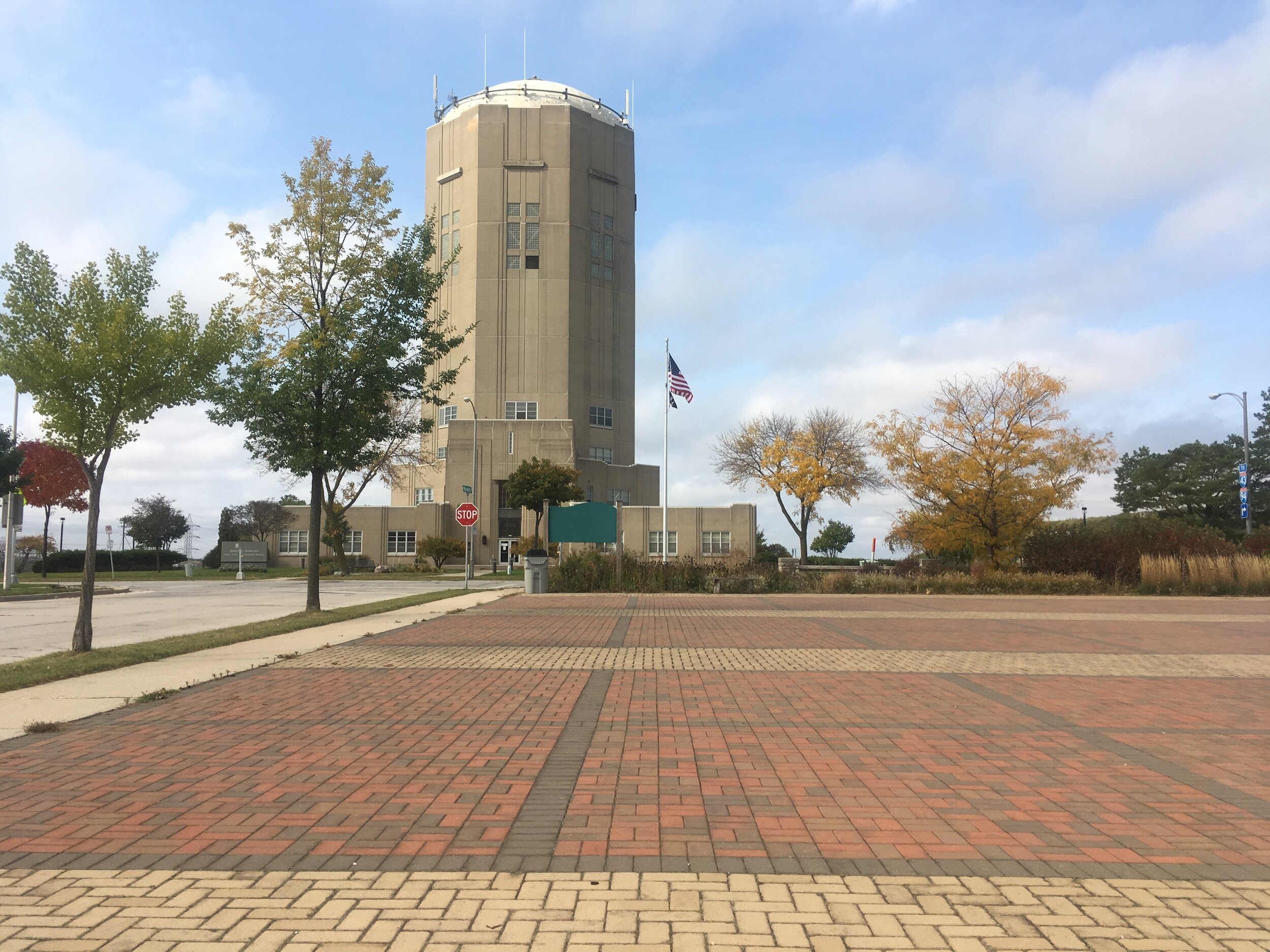Karen Dettmer
Her Job Is Delivering Clean
Drinking Water
“Just because we live in different jurisdictions doesn’t mean the water cares. It will flow where it flows. And if we’re going to have a sustainable and informed approach to solve some of these problems, it requires that holistic view.”
Meet Karen. Karen Dettmer is superintendent of Milwaukee Water Works, the publicly owned utility responsible for delivering clean drinking water to over 860,000 customers in and beyond the City of Milwaukee.
Karen grew up in the Chicago suburbs and came to Milwaukee to study at the Milwaukee School of Engineering, earning her undergraduate degree in architectural engineering and her graduate degree in environmental engineering. While in grad school, she interned with the City of Milwaukee Department of City Development (DCD).
She fell in love with Milwaukee, which she credits as offering all the amenities of Chicago but without the traffic—plus its great access to the water—and landed a job with a Milwaukee-area consulting firm. Karen worked on a variety of projects ranging from toxicology litigation, brownfield redevelopment, greenfield development, stormwater management, to utilities installation. She worked on the redevelopment of the Bayshore Mall, overseeing the installation of utilities on a brownfield former landfill site.
Four years into consulting, she followed an opportunity to return to working with DCD.
“I never pictured myself in public service. I never pictured myself in a political setting. But I would never look back. It’s been greatly rewarding,” Karen says. “The biggest change for me was that I still see that I’m working for my clients. As a consultant, you have clients, and you're working for the best interests of your clients. But in consulting I wasn't able to choose my clients. Quite honestly, I didn’t always like my clients. But it’s very, very easy for me to work for the citizens of Milwaukee, see them as my clients, and work hard for those individuals—work hard for those citizens.”
After a stint within DCD, she elevated in 2016 to coordination manager of the city's Department of Public Works. Expanding her varied expertise across city projects led Karen to become a self-described “Jill-of-All-Trades, Master of None.” The opportunity to lead the Water Works came in 2019. She describes her role as a great fit.
“The passion and the pride that I have seen in every level of staff at Milwaukee Water Works is just exceptional,” she says. “The pride that we all have in delivering clean drinking water, the source of life, to 860,000 customers is just apparent in every level of staff.”
Milwaukee Water Works marked its 150th anniversary in 2021. Organized in 1871 by a city board of business and industry leaders—including Frederick Pabst, then of Best & Co. Brewery—they wanted a system engineered to provide “a central source of pressurized water to fight fires,” according to utility materials. This was especially important in an era of predominantly wood and brick construction that made cities vulnerable to fire—great 1871 fires in Chicago and Peshtigo, Wis. offered devastating reminders.
In 1874 Milwaukee Water Works began operations, pumping over 1 million gallons in its first year (compare that to the approximately 100 million gallons the system pumps today). It is interesting to note that this network of pressurized city fire hydrants came first. Delivering clean drinking water for homes and businesses was secondary, but has since become the primary focus.
The Milwaukee-owned utility not only supplies drinking water to Milwaukeeans but also sells water to neighboring municipalities. In the early 20th century, the Water Works’ pumping capacity matched the sizeable demand of Milwaukee’s burgeoning manufacturing and brewing industries, and helped fuel the wartime industrial boom that supported the Allied victory in World War II.
With the deindustrialization of the late 20th century, the broader economic shift toward a service economy, and 21st-century businesses deploying water efficiency and recycling practices, demand on a per-gallon basis has steadily declined such that the utility today has excess capacity.
That excess capacity will enable Milwaukee Water Works to supply the City of Waukesha with clean drinking water through a special expansion of its service area across the Great Lakes Basin divide approved in a first-of-its-kind agreement under the Great Lakes Compact, an interstate agreement to keep Great Lakes water within the basin except under certain conditions. Waukesha, which sought an alternate municipal water supply to groundwater contaminated by radium, will pay for the expansion to deliver Lake Michigan water treated by Milwaukee Water Works. Additionally, the City of Milwaukee also negotiated with Waukesha an additional payment that will be used to support lead lateral replacement of city homes.
Approximately 67,000 homes in Milwaukee are served by lead service lines. It is important to note that since 1996 the water pumped through Milwaukee’s distribution system contains orthophosphate, a compound that prevents lead from leaching into the water by forming an impenetrable coating under expected conditions. This coating also serves to prevent corrosion of fixtures inside homes and businesses which may also contain lead. Still, lead, a neurotoxin, remains a public health concern and efforts are underway to replace all lead pipes and plumbing.

Karen Dettmer in 2020.

Did you know that the Milwaukee Water Works that delivers clean water to homes and businesses when you turn on the tap actually started as a system to support fire suppression? The same system still provides pressurized water to the city’s fire hydrants, which are periodically flushed for maintenance.

The Town of Lake water tower, though no longer used as a water tower, stands as a landmark near the Howard Avenue Treatment Plant, which was upgraded after the 1993 Cryptosporidium outbreak was traced to the plant.
What to know about lead and our water
Water Quality
If you are a Milwaukeean above a certain age, you know what “Crypto” means. But if you are younger, you may not be aware of this pivotal chapter in Milwaukee’s Water Story.
In spring 1993, Milwaukee experienced the largest waterborne disease outbreak recorded in U.S. history. Some 400,000 people were sickened by the gastrointestinal parasite Cryptosporidium and dozens with compromised immune systems died after drinking the water.
In response to this public health crisis, Milwaukee has become a global leader in water treatment and detection.
The city invested approximately $90 million to upgrade the Water Works, adding ozone treatment, replacing filter beds, improving monitoring and maintenance protocols in its two treatment plants, and moving the water intake a half-mile further out in Lake Michigan—farther from nearshore waters more likely to spread contaminants or pathogens washed from the land after heavy rains.
The Water Works also began an enhanced testing protocol far beyond standards required by the state or federal governments in an effort to detect other emerging contaminants before they become an issue. At the time, Cryptosporidium was not tested for in urban water systems. Today, Milwaukee Water Works tests for almost 500 contaminants.




